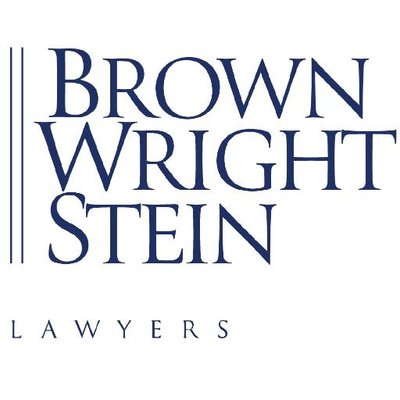ATO takes off the kid gloves on family trusts
If you or your client has a family trust you need to consider new ATO guidance that will likely mean more tax will be paid on future trust distributions and that the ATO may want to examine your past practices in distributing income – see in particular the Taxpayer Alert discussed below concerning distributing trust income to adult children.
The ATO has released four new pieces of guidance that demonstrate a more aggressive position in relation to the taxation of distributions from discretionary trusts to related companies and family members. The approaches set out in these documents represent a change in ATO policy and indicate that the ATO will be focusing on these areas.
Importantly, the ATO looks set to attack what many accountants may consider to be regular tax planning for trust income and it is critical that all people making trust distributions or advising on them consider their practices in relation to trusts in light of this guidance.
The guidance relates to trust entitlements and arrangements that the ATO considers are entered into to distribute income to persons where there may not be an intention for them to receive the benefit of the income entitlement.
Section 100A Draft Ruling
The centrepiece of the new guidance is a draft ruling on section 100A of the Income Tax Assessment Act 1936 (Cth) (ITAA 1936), Draft Taxation Ruling TR 2022/D1.
Broadly, section 100A may apply where a trust beneficiary is made presently entitled to income of the trust, but the benefit of that distribution is enjoyed by someone else. If the distribution was made with a purpose of ensuring lower tax is paid or payment of tax is deferred, section 100A operates to assess the trustee as though no beneficiary were presently entitled, i.e. currently at 47%.
TR 2022/D1 sets out nine examples that shed some light on the ATO's views, including what kinds of arrangements could be ‘ordinary family and commercial dealings’ and, therefore, be excluded from the operation of section 100A. Many of the arrangements where the ATO considers section 100A would apply have been historically (or recently) used by family groups to take advantage of lower marginal tax rates of various family members and related entities. The ATO expresses the view that just because an arrangement is common does not make the arrangement 'ordinary'.
Issued with TR 2022/D1 is Practical Compliance Guideline PCG 2022/D1, in which the ATO sets out a risk based approach that it intends to follow in relation to arrangements potentially caught by section 100A.
Taxpayer Alert – Distributions to adult children
Most significantly, the ATO has issued Taxpayer Alert TA 2022/1 concerning arrangements where trust income is distributed to adult children, while the parents enjoy or otherwise deal with the benefit of the income. While the alert specifically considers arrangements involving adult children of the individuals controlling the trust, it also notes that the ATO is concerned about similar arrangements involving other family members of controlling individuals that would have a lower marginal tax rate.
The ATO raises the potential to use the promoter penalty regime or referrals to the Tax Practitioner Board against tax agents and accountants that facilitate such arrangements.
Division 7A UPE Refresh
The ATO has also issued a Draft Taxation Determination TD 2022/D1 concerning its view on the application of Division 7A to trusts conferring entitlements on private companies.
The ATO had previously set out its views in TR 2010/3 and PS LA 2010/4, where the ATO stated that a UPE owed to a private company from a trust that is a shareholder or associate of a shareholder would be treated as financial accommodation by the company and, therefore, subject to Division 7A if it was not paid out or held on sub-trust by the main trust's lodgment day.
TD 2022/D1 takes a new and more aggressive position that the UPE will be financial accommodation from the time that the private company beneficiary has knowledge of an amount of trust income that it can demand immediate payment or where the beneficiary has knowledge that the trustee is making use of funds held on sub-trust. Where the corporate beneficiary and the trust are controlled by the same person, knowledge will be assumed. This may mean, in the case of an entitlement to trust income, that the loan will be taken to have been made in the year in which the trust entitlement arises.
Conclusion
The simultaneous release of these four documents after what is understood to be considerable consultation demonstrates that the ATO has an increased focus on tax planning involving trust distributions. It is critical that all controllers of trusts, accountants and tax advisers understand the ATO's new approach and consider its implications, both in terms of year ending tax planning for this financial year but also whether past affairs of trusts need to be reviewed.
We encourage you to contact us before June to talk about year end planning and reviews of prior distributions.
We will be providing further training and materials on the content of these documents in the coming weeks and months. To subscribe for updates please complete the subscribe form, and for specific advice in relation to your circumstances, please contact our Tax team.
The material in this article was correct at the time of publication and has been prepared for information purposes only. It should not be taken to be specific advice or be used in decision-making. All readers are advised to undertake their own research or to seek professional advice to keep abreast of any reforms and developments in the law. Brown Wright Stein Lawyers excludes all liability relating to relying on the information and ideas contained in this article.
contact
Jane Harris
Associate
E jeh@bwslawyers.com.au
P 02 9394 1006
Matthew McKee
Partner
E mpm@bwslawyers.com.au
P 02 9394 1032



